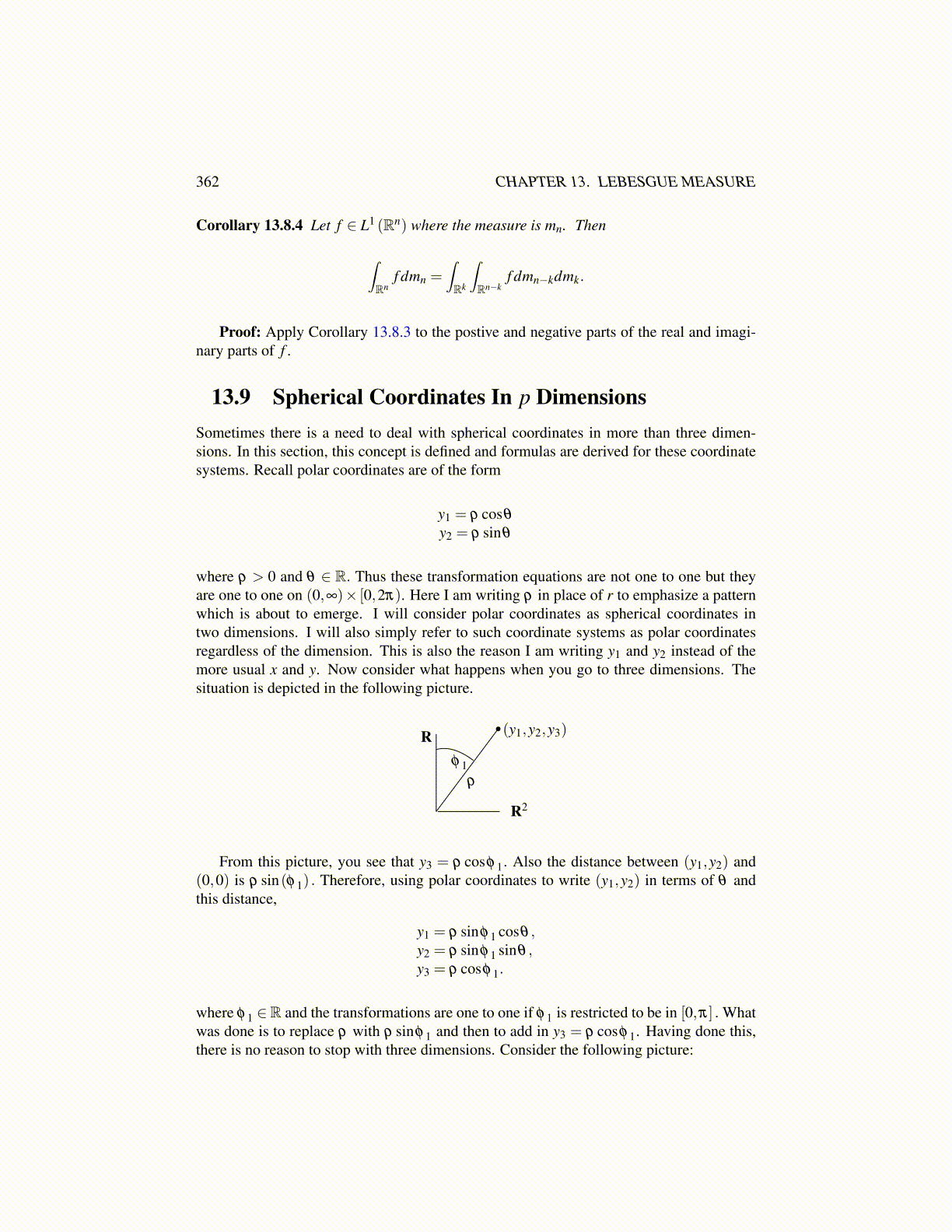
362 CHAPTER 13. LEBESGUE MEASURE
Corollary 13.8.4 Let f ∈ L1 (Rn) where the measure is mn. Then
∫Rn
f dmn =∫Rk
∫Rn−k
f dmn−kdmk.
Proof: Apply Corollary 13.8.3 to the postive and negative parts of the real and imagi-nary parts of f .
13.9 Spherical Coordinates In p DimensionsSometimes there is a need to deal with spherical coordinates in more than three dimen-sions. In this section, this concept is defined and formulas are derived for these coordinatesystems. Recall polar coordinates are of the form
y1 = ρ cosθ
y2 = ρ sinθ
where ρ > 0 and θ ∈ R. Thus these transformation equations are not one to one but theyare one to one on (0,∞)× [0,2π). Here I am writing ρ in place of r to emphasize a patternwhich is about to emerge. I will consider polar coordinates as spherical coordinates intwo dimensions. I will also simply refer to such coordinate systems as polar coordinatesregardless of the dimension. This is also the reason I am writing y1 and y2 instead of themore usual x and y. Now consider what happens when you go to three dimensions. Thesituation is depicted in the following picture.
φ 1ρ
(y1,y2,y3)
R2
R
From this picture, you see that y3 = ρ cosφ 1. Also the distance between (y1,y2) and(0,0) is ρ sin(φ 1) . Therefore, using polar coordinates to write (y1,y2) in terms of θ andthis distance,
y1 = ρ sinφ 1 cosθ ,y2 = ρ sinφ 1 sinθ ,y3 = ρ cosφ 1.
where φ 1 ∈R and the transformations are one to one if φ 1 is restricted to be in [0,π] . Whatwas done is to replace ρ with ρ sinφ 1 and then to add in y3 = ρ cosφ 1. Having done this,there is no reason to stop with three dimensions. Consider the following picture: